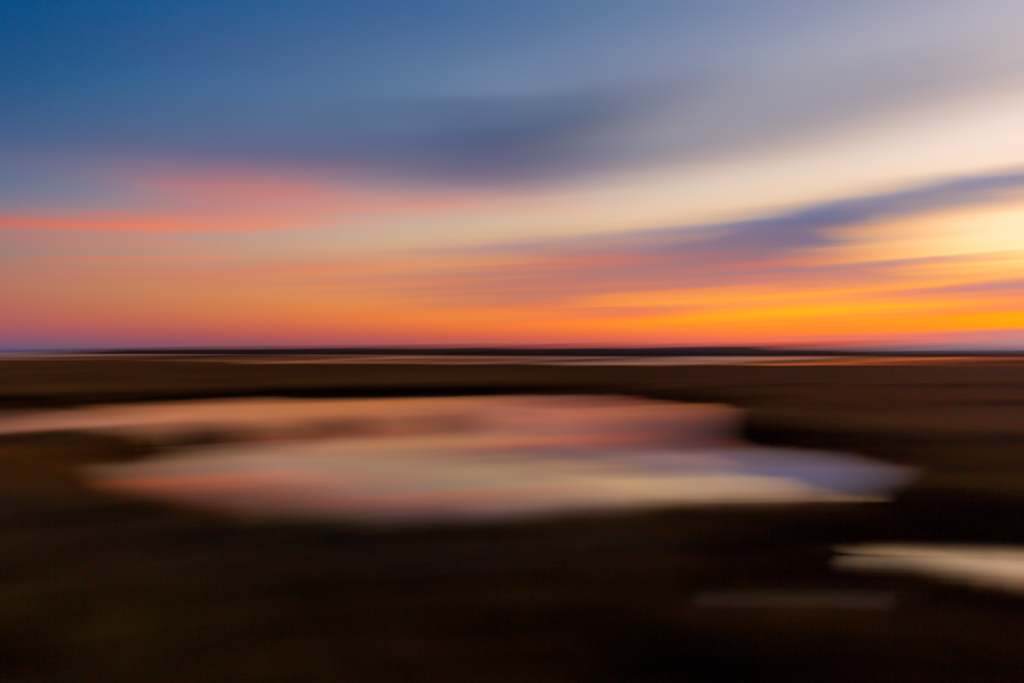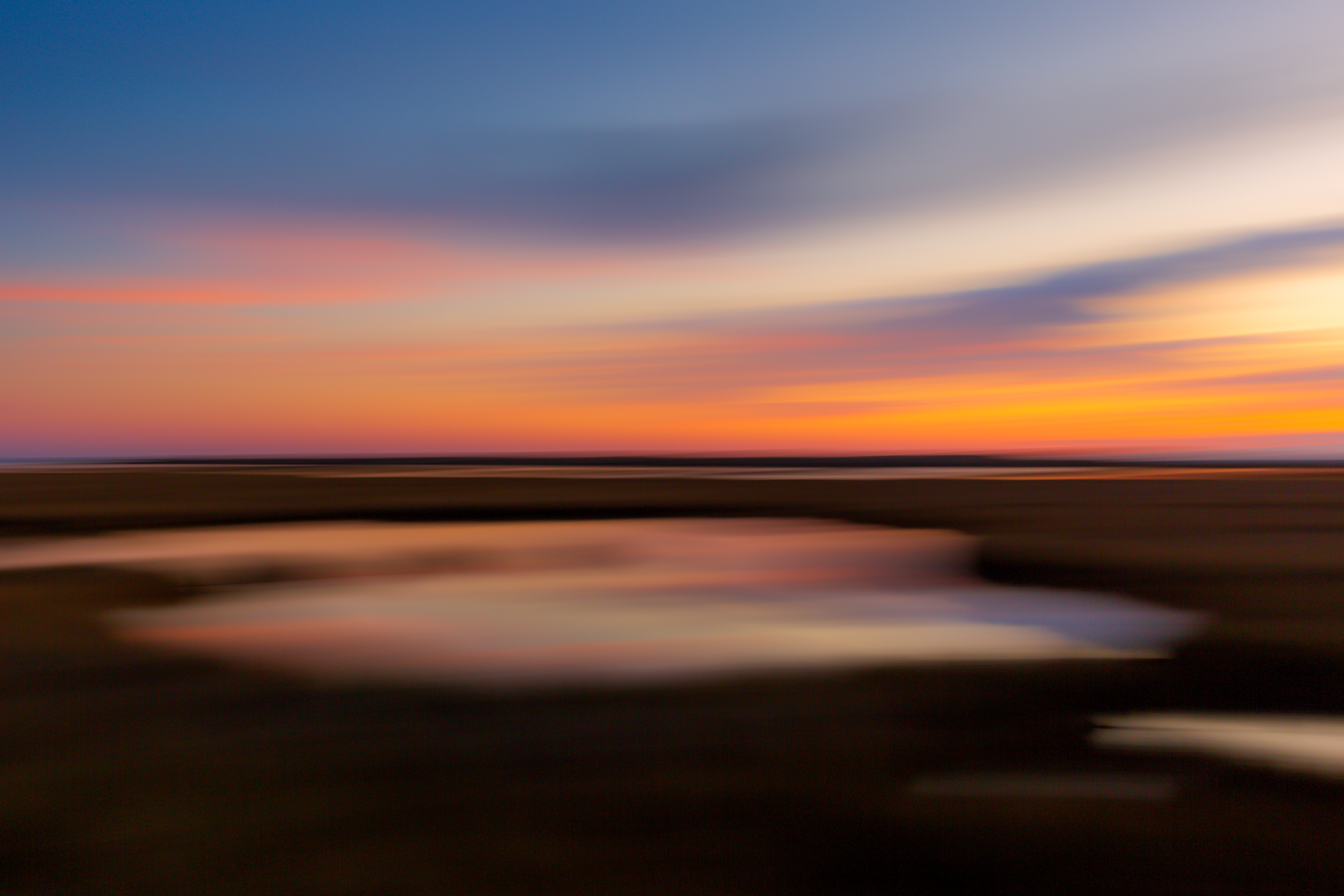
Take camera and lens. Set yourself a suitable focal length. (35mm demonstrated here.) Stand astride the salt marsh feet shoulder width apart. Pretend you’re the Colossus of Rhodes. Wait for sunset. As you depress the shutter, pan side-to-side in a smooth, steady motion—left to right is my go-to; sluggish shutter speeds work best. (I’m rolling with a lolling 1/13 of a second on my shutter in the photo above.)
Follow the steps outlined above and a blurred photo will zero and one its way onto your memory card. And if you’re somehow still reading you may be wondering why written steps to produce an out of focus photo is a thing—let alone a purposeful one. Enter the subjectivity of the three letter word that starts with A—art. I may be an n of one but I do love me some motion blur by design in photographs. If you have been following this blog over the years you may now recall seeing a few photographs cut from this cloth.
So what’s the rub? For me it is simple: executing intentional motion blur gets the viewer to the heart of an image. It cuts away the sharp focus, high resolution detail that can clutter and shroud the soul of a photograph. With forced motion blur we deconstruct down to basic movement, color, tone, and form. This allows the image to land on each viewer on a conscious level. Expectation breaks down and the photograph can exist as it is with no preconceived notions.
Of course even with sharp focus tabled for another day we still know exactly what we are viewing. The elements of the photo are clearly discerned as we look upon a salt marsh at sunset with clouds, tide pools, and grasses. Who needs sharp focus when a little bit of motion helps us see clear?
Interested in buying? Purchase
